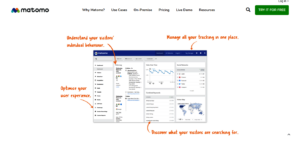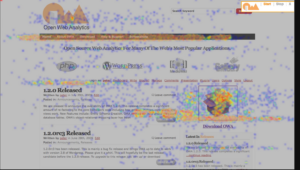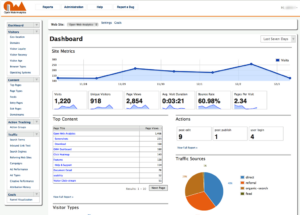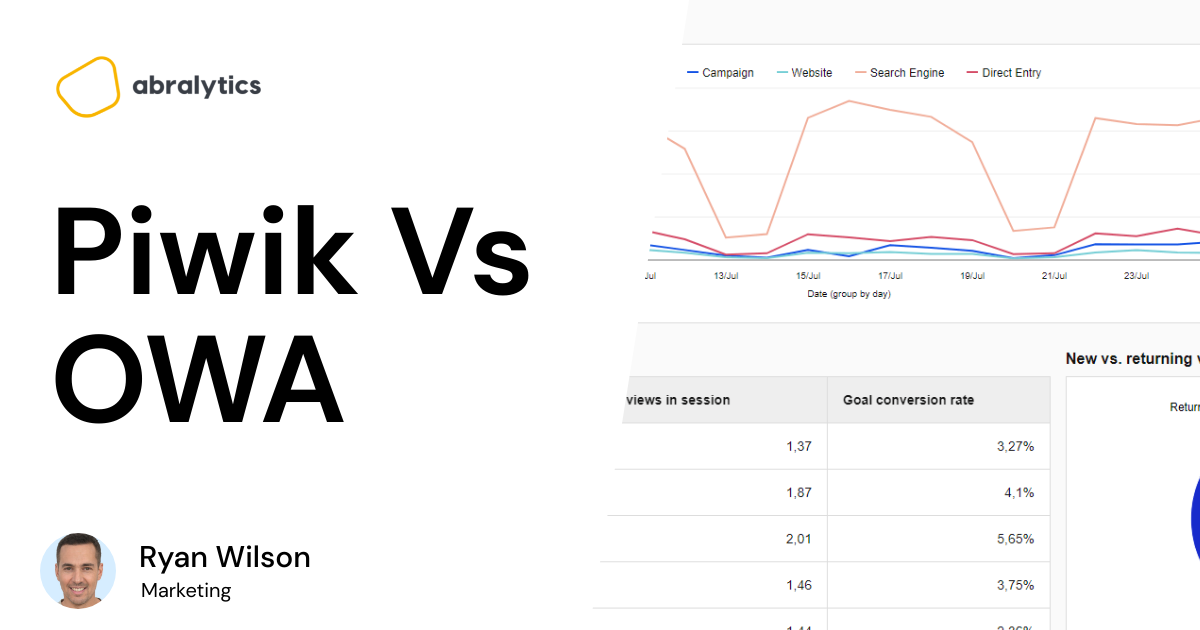In order to analyze the success of your website, you need a reliable analytics tool to track a visitor’s engagement across your site and products. The big question, though, is, which analytics tool is right for you?
Before making potentially costly decisions, ensure you’ve found the best analytics solution for your business.
There are a few key considerations. The analytics solution must:
- suit your business goals,
- be price-friendly relative to your business size,
- offer advanced analytics solutions relevant to your needs,
- Allow mutual integration with tons of other marketing tools,
- comply with data privacy requirements, and
- feature an easy-to-use interface.
So, if you’re looking for a top-tier analytics platform and want to compare Piwik with OWA before making a decision, keep reading.
This article compares the two tools and focuses on their similarities, core differences, and which is the best tool for various audience types.
What Is Piwik Analytics (now Matomo)?
To begin, the important thing to note is that Piwik is now called Matomo, and “Piwik Pro” is a separate product.
In this article, we will focus on Matomo, an open source analytics platform that uses PHP and MySQL to provide extensive information about your website and its visitors.
The report also provides:
- user demographic data
- browsing patterns
- interactions with your site’s content
- the source of your traffic
- conversion rates (or bounce rates).
With this, you can examine what in your marketing funnel increases conversions and what doesn’t.
In addition, Piwik grants you full ownership of the data on your website, so nobody else can access your website’s data without your permission.

Source: Matomo
What Is Open Web Analytics (OWA)?
Open Web Analytics, or OWA, is free, open-source software that lets you track and monitor how users interact with your websites and applications.
Besides, OWA offers website owners and developers simple JavaScript, PHP, or REST-based APIs that make it simple to integrate web analytics into their websites.
Additionally, the analytics platform has built-in support for tracking websites created using well-known content management systems like WordPress and MediaWiki.
The Core Similarities Between Piwik And OWA
As Google Analytics alternatives, Piwik and OWA have several similar features. Now, let’s have a look at them before discussing their differences.
- Open Source Web Analytics
First, both tools are fully open-source web analytics. So, the code is available for anyone to read and inspect on GitHub. You can read and review it to learn how it works and to ensure that the data is kept private and secure.
Because of their transparency and openness, you can trust open-source tools better than proprietary and closed-source ones.
- Installation And Maintenance
OWA will need to be installed and maintained on your own server.
Installing your analytics on the same server as your website is usually good. If your site is down, your analytics tool can’t collect any data, so it won’t matter whether the analytics code is functional.
- Open Web Analytics
Piwik and OWA are both developed in the open to encourage user feedback and suggestions.
For instance, you can look at the Piwik project’s public roadmap and add (or vote on) your preferred feature recommendation.
- 100% Data Ownership
With Piwik or OWA, you have complete control and ownership over all website stats and other data collected.
So, you don’t need to be concerned about anybody else gaining access to the information on your website.
Unlike Google Analytics, neither visitor’s information nor any behavioral data are shared with or sold to third parties for advertising purposes .
- User Tracking Features

Source: OWA
As two of the best Google Analytics alternatives, Piwik and OWA let you see how users engage with your website pages with features like the heatmap tool and click tracking.
Both tools provide this feature by recording visitor clicks and mouse movements on your web page, the scroll activities of your users, and pinpointing the areas of your sites that your visitors find most useful.
The Core Differences Between Piwik And OWA
Besides their user interface and other features, the core differences between Piwik and OWA are as follows:
Pricing Models: Piwik Vs. OWA
Piwik has two models – Matomo Cloud and Matomo On-Premise.
On the other hand, Open Web Analytics (OWA) has just one plan – Free.
Piwik (Matomo) On-Premise
This version of Piwik is free. To get started, you need to host it on your web server. However, you can purchase some extra bundles for better analytics.
Some of these bundles are SEO Web Vitals (starting at $86.67/year), multi-channel conversion attribution (starting at $86.67/year), and Roll-Up reporting (starting at $218.33/year).
Piwik (Matomo) Cloud
This version of Piwik is cloud-hosted and comes at a price that varies with your site’s traffic and use. The price ranges from $0(21 Day free trial) to $15,250 annually.
Open Web Analytics (OWA)
Open Web Analytics is free of charge. To start, you only need to install the tool on your web host.
With these three easy steps, you can install OWA – download OWA, upload files via FTP, and configure the database name.
Being a framework has several benefits, one of which is how adaptable OWA is. It can be used on your website or as a part of a web application.
Verdict On Pricing Model
Though Piwik offers flexibility with its two plans, Open Web Analytics wins because it’s free, and users enjoy all the analytics and reporting features of a web analytics solution.
Loading Speed: Piwik Vs. OWA
Since both tools are built differently, they vary in how fast your website pages load after you’ve installed OWA or Piwik.
Piwik (Matomo)
Matomo.js (Piwik’s JavaScript code) adds 22.8 KB to your website’s page. It is large enough to slow down your website but smaller than Google Analytics (which adds about 45.1KB).
However, Piwik has attempted to address previous difficulties with load speed. They provide plug-ins and on-site support to aid in faster loading times.
OWA
OWA adds tracking code to your website using simple JavaScript, PHP, or REST-based APIs.
But how much does this add to your site?
The type of tracking necessary and the plug-in used when adding the tracking code to your website determine how quickly it loads.
Verdict On Loading Speed
It’s important to note that the faster the loading time, the better for your business. While Piwik adds 28.1KB to each of your site’s pages, OWA’s script size depends on your tracking type and plug-ins.
For the latest stats on how your site’s speed affects conversions, see our article on website performance.
Ease Of Use: Piwik Vs. OWA
The usability of an analytics solution is crucial, especially if you’re new.
You want a dashboard with a simple, aesthetically pleasing interface that incorporates all the essential features.
Starting with the Piwik dashboard, let’s compare these two tools.
Piwik (Matomo)
The dashboard for Matomo classifies reports and presents the most pertinent data on a single page.
It includes Visits In Real-Time, Visits Over Time, Visitor Map, Channel Types, and other categories.
Meanwhile, you can switch between platform features in the window on the far left while keeping an eye on your report. You can also choose from options like Funnels, Goals, E-commerce, Acquisition, and Media, to mention a few.
Overall, Piwik provides a very comprehensive and fully customizable interface.
OWA

Source: OWA Dashboard
OWA provides a straightforward dashboard that shows the most vital stats you should know.
However, keep in mind that OWA is only a framework and provides you with the means to configure your tracking requests to the extent you need. The drawback is that you, the user, must be knowledgeable about programming.
Users can better understand vital data, including Traffic Sources and Site Visitors, by using the homepage’s charts and graphs.
The dashboard clearly shows Visitors, Unique Visitors, Page Views, Average Visit Duration, Bounce Rate, and Pages Per Visit upon startup.
Verdict On Ease Of Use
Although both require some experience to navigate their dashboards, Piwik is easier for new users.
Integration Capability: Piwik Vs. OWA
How effectively do these analytics solutions integrate with popular platforms like Shopify, Wix, and WordPress?
Piwik (Matomo)
Piwik integrates easily with marketing tools, including content management systems, online stores, forums, and frameworks.
So, regardless of the operating system you choose, there is the possibility that if you opt for Piwik Analytics, you will be able to analyze website traffic.
OWA
Open Web Analytics supports any website framework and can track and analyze user interaction, but its support focuses on the WordPress and MediaWiki content management systems.
Verdict On Integration
Piwik is ahead of Open Web Analytics here! The analytics tool offers easy integration with tons of marketing tools.
Use Cases: Piwik Vs. OWA
Piwik (Matomo)

Source: Matomo
Piwik ranks among the most popular online analytics tools, second only to Google Analytics in terms of usage.
Besides, Piwik is implemented on more than 1.5% of websites using known traffic analytics software.
eCommerce website owners, digital marketers, small business owners, and managers of both large and small businesses are a few examples.
OWA
Open Web Analytics has a relatively low market share compared to Piwik or other popular Google Analytics alternatives like Adobe Analytics, Fathom, MonsterInsights, etc.
However, you’re not limited, in any way, beyond what your server can handle. No matter how much traffic a website receives, you can choose OWA as your analytics solution.
Besides, you can configure your tracking based on your preferences using custom variables. This feature is handy for e-commerce websites.
Both small and large businesses can use OWA for their analytics – depending on your experience with analytics tools.
Final Verdict
Deciding between Piwik and OWA for your website analytics depends on your business goals and needs.
While both tools share a couple of the features discussed in this article, they are not the same.
Matomo is ahead if you must integrate your site analytics with other marketing tools. On the other hand, OWA is the go-to option if you want an adaptable analytics solution.
However, if you are looking for the ideal Google Analytics alternative that is simple, jargon-free, and easy to use for anyone, then opt for TAbralytics.
If you found this article helpful, then check out similar Analytics articles on Abralytics.
Other related articles




